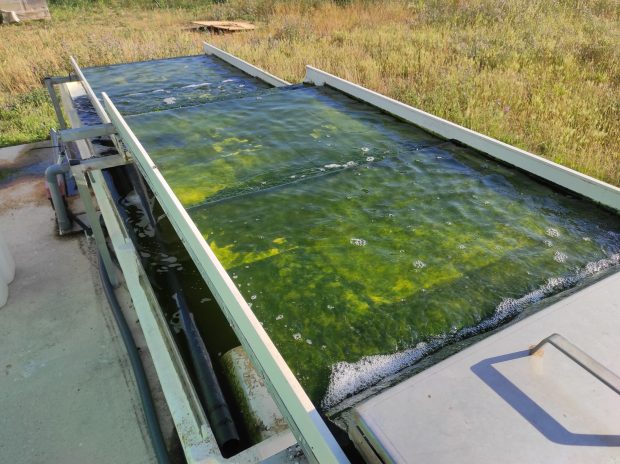Biofilms to reduce pollutants in wastewater
A final purification process with biofilms at the outlet of small wastewater treatment plants could reduce antibiotic-resistant genes and improve human and environmental health.

In the CT BETA of the UVic – UCC PhD student Lluís Bertrans-Tubau has evaluated the effectiveness of biofilms (bacteria and microalgae) to reduce nutrients, emerging contaminants and antibiotic resistance genes in the water leaving the treatment plants, before being returned to the river and subsequently made drinkable. This research recently published, carried out in collaboration with Instituto Catalán de Investigación del Agua (ICRA) and the University of Girona (UdG), analyses how these genes can accumulate or remain stable, and generate a potential impact on human and environmental health.
It has been observed that the water coming out of wastewater treatment plants that treat urban wastewater contains a biofilm and planktonic communities, which pick up antibiotic resistance genes and mobile genetic elements for enrichment. The biofilm adheres to the stones through which the water passes and is spontaneously generated by the natural conditions of the environment. The biofilm can purify the water of these genes, so by observing the environment, the idea was to recreate this system in the laboratory and in a pilot plant under real conditions as a nature-based solution.
In a bioreactor, the water leaving the treatment plant is recirculated, and biofilm and planktonic communities are expected to grow. In a couple of days, the water would be purified of these elements. This methodology would be feasible in small town wastewater treatment plants and would have a very low economic cost. The bioreactor would be placed at the outlet of the treatment plant because at this point there is sufficient nutrient load for the biofilm to adapt, and thus a tertiary or final treatment of the water would be carried out.
“Current legislation does not require small municipal wastewater treatment plants to carry out ultrafiltration of water destined for rivers, which is a costly process. Therefore, the use of the bioreactor would not only clean the water, but also significantly reduce costs,” says Bertrans-Tubau.
The research includes the study of the DNA of the biofilm, as well as of the wastewater entering and leaving the bioreactor, quantifying and analysing especially the antibiotic resistance genes and mobile genetic elements. This study is carried out using metagenomics, a technique that allows massive sequencing of genes to link genomes bioinformatically, unlike other more specific sequencing techniques such as qPCRs. The aim is to amplify the genes and carry out an evaluation to improve the treatment of this wastewater, and ensure greater safety for public and environmental health.
